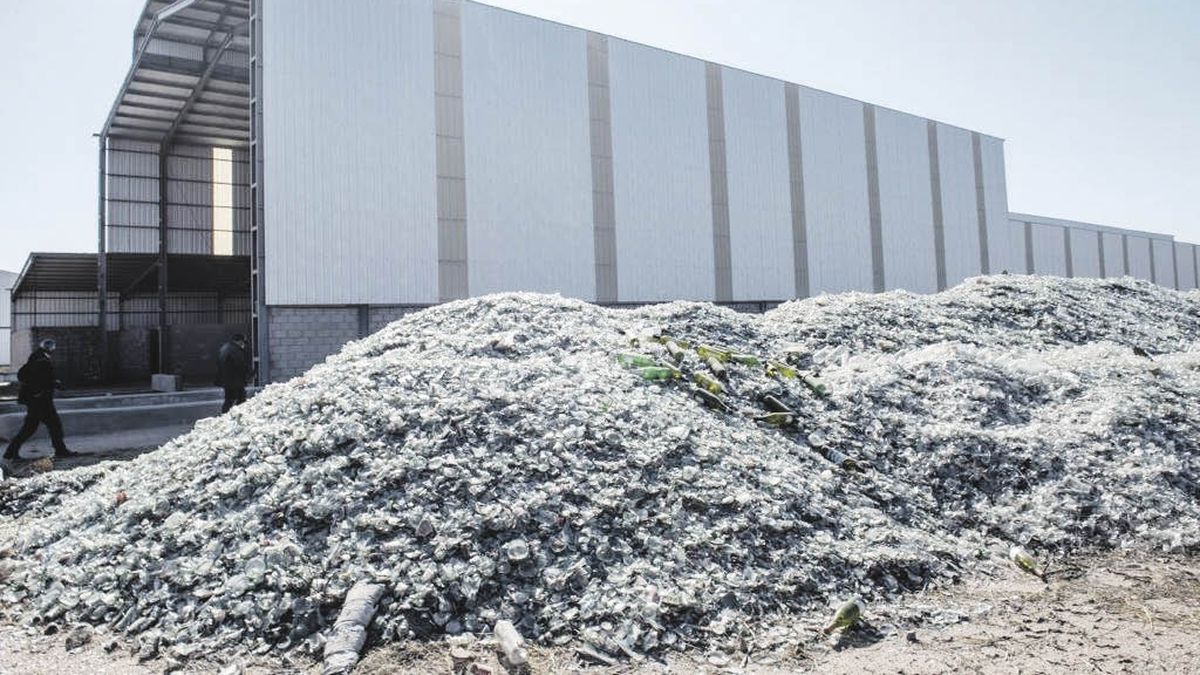Precisely in the surroundings of the Riojan capital, a Vidrios Riojanos production line will be installed, a project that will take shape with the delivery of a subsidized loan for $ 900 million. This will allow a wine bottle factory to be operational by 2022 with a production capacity of 100,000 bottles per day, only of the green and transparent varieties.
The project to install a glass factory in the province of La Rioja has been underway since 2014, since it is a provincial State company, which is now gaining momentum with a credit contribution from the national government. It is expected to generate 100 genuine and direct jobs on a permanent basis. For the production of the bottles he will use local materials, such as quartz, feldspar and dolomite.
According to the feasibility studies carried out for this project, the quartz deposits found in Estación Mazán have a capacity of more than 50 years of possibility of extraction.
The problem of the shortage of glass containers for wines is a worldwide problem, not only in Argentina. But here it worsened in recent months as a result of the fire that took the plant of the Mendoza Veralia, one of the main suppliers in the sector, out of production.
The announcement of the contribution of $ 900 million to accelerate the completion of the project was made by the Minister of Productive Development, Matías Kulfas, during a visit to Mendoza where representatives of the wine sector met.
It occurred in the context of the plan to reach US $ 1,000 in fractionated wine exports. “We come to ratify the commitment of the national government with the development of this industry and we are available to continue accompanying them,” said Kulfas when participating in person in Mendoza at the last meeting of the Board of Directors of the Argentine Wine Corporation (Coviar).
There, Kulfas met with leaders of the different business chambers, officials of the wine provinces and representatives of the National Institute of Agricultural Technology (INTA) and the National Institute of Viticulture (INV).
At the meeting, the impact of the measures taken during 2021 to reach the target on exports of fractionated wines was analyzed. The current situation, the impact of the increase in refunds, the decrease in withholdings and the need to find solutions to deal with the shortage of bottles were also evaluated.
The president of Coviar, José Alberto Zuccardi, stressed that “viticulture already exceeds US $ 820 million, so the goal is getting closer and closer,” alluding to the plan to reach US $ 1 billion.
Kulfas highlighted the positive impact that the increase in reimbursements and the reduction of withholdings had for viticulture, especially for SMEs that were announced in October 2020 after several orders and studies presented by the sector to the Government.
“We were able to implement a policy of improvement of up to more than 100% in reimbursements to exports of viticulture, improving the margins of the exporting sector, and this year we also implemented the reduction to zero of the export duties of all wineries that export up to US $ 500,000 and a 50% reduction for those that a year sell abroad between US $ 500,000 and US $ 1 million; and with this the truth is that three out of every four wine exporters have benefited ”, he explained.
Source From: Ambito
David William is a talented author who has made a name for himself in the world of writing. He is a professional author who writes on a wide range of topics, from general interest to opinion news. David is currently working as a writer at 24 hours worlds where he brings his unique perspective and in-depth research to his articles, making them both informative and engaging.




